Late Summer? Time To Harvest Your Sweet Potatoes, With Storage Tips From Andrew Hock

VEGETABLES > POTATOES > SWEET > HARVESTING

Elizabeth is a Permaculture Garden Designer, Sustainability Consultant and Professional Writer, working as an advocate for positive change. She graduated from the University of St. Andrews with an MA in English and Philosophy and obtained a Diploma in Applied Permaculture Design from the Permaculture Association.
Reviewed By DAN ORI

Dan has over 27 years’ under his belt caring for plants and gardens. Working as a Horticultural Instructor and Consultant, he draws on a diverse range of experience that includes working as a Head Gardener, Tree Surgeon, Garden Centre Trouble Shooter, and writer of academic papers. Dan has a Level 3 Diploma in Horticulture and is currently a candidate for the RHS’s most prestigious award – The Master of Horticulture.
Contributions From ANDREW HOCK
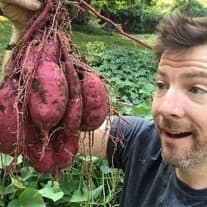
Andrew Hock, from Tennessee in the USA, is the Founder of the Sweet Potato Society and a gardener with many years of growing experience. His society's mission is dedicated "to the appreciation, cultivation, and celebration of sweet potatoes".
Sweet potatoes, Ipomoea batatas, are not the easiest crop to grow in the UK, but there are now varieties much better suited to cultivation in our climate than were on offer before.
It is definitely possible to achieve good results as long as you have positioned and cared for your crop correctly.
In our climate, it is certainly easier to grow a worthwhile harvest of sweet potatoes under cover in a greenhouse or polytunnel, but even outdoors with some protection, it will be possible in much of the UK.
Once you successfully grow these plants to maturity, you will need to know when and how to harvest your sweet potatoes correctly and what to do with them once you have.
Below are the basic things that you should know when it comes to harvesting and storing your sweet potato crop.
| Difficulty | Easy |
| Equipment Required | Fork or trowel |
| When To Harvest | August to October |
When To Harvest Sweet Potatoes
Sweet potatoes are typically harvested between late summer and the first frost, which is usually between August and October.
When precisely you will harvest will depend on when you planted your slips and also on where you live, the conditions to be found there and the variety that you have chosen to grow.
“By waiting to harvest for as long as possible, you can expect as large a yield as possible,” says Andrew Hock, Founder of The Sweet Potato Society.
“The tubers can live underground pretty happily, as long as it’s not too wet and soggy, so wait until the top greens begin dying.
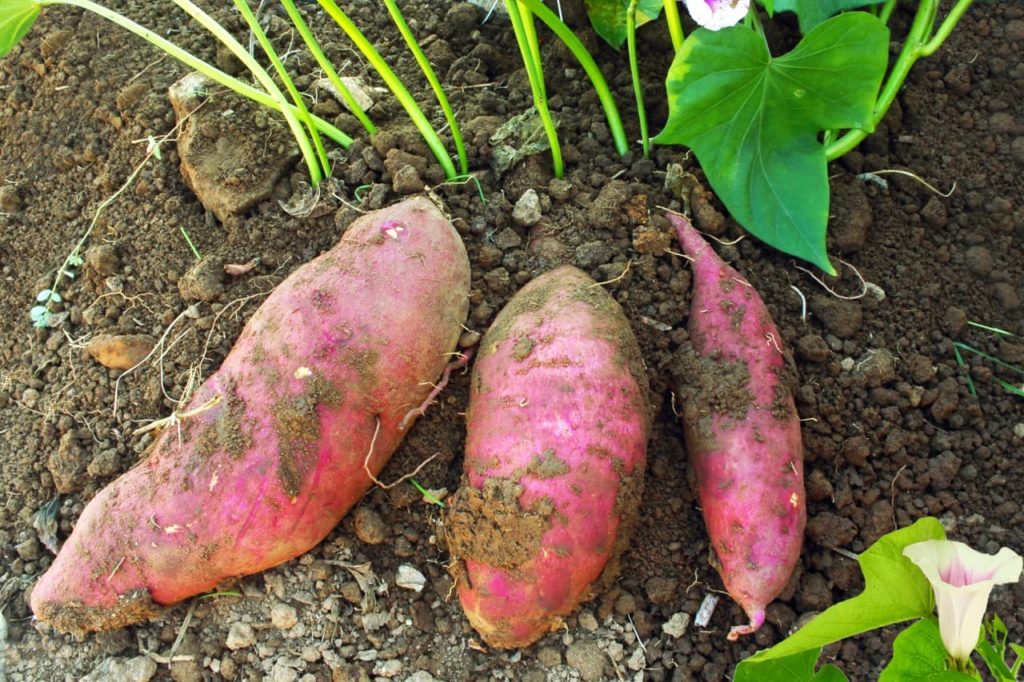
“A lot of energy gets sent back down to the tubers as the stems and plants die.
“It’s hard to be patient this time of year but if it’s not too wet or cold, hold off as long as possible for the biggest yield.”
Some sweet potato cultivars have a shorter time to harvest than others, but you can typically expect to harvest your edible sweet potato tubers around 4-5 months after you planted the slips in the spring.
Of course, you will only be able to harvest a worthwhile yield after this time has elapsed if you have taken good care of your crop over the summer months by keeping them well watered, well fed and otherwise cared for correctly.
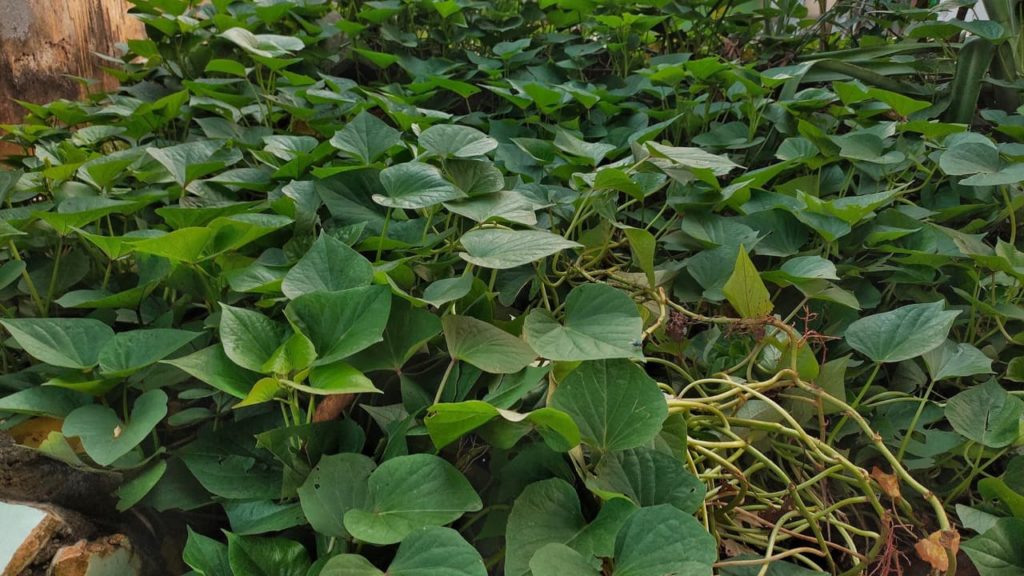
The main harvest from your sweet potatoes is the tubers, but it is also worth remembering that these plants also provide an additional yield.
The young shoots and the leaves are also edible and you might consider these as an additional source of nutrition from these plants.
Therefore, you might harvest the odd little shoot or leaf here and there much earlier than when the main harvest becomes available.
“To get the best harvest for the space and easily pick young shoots, I recommend growing sweet potatoes up something, as it’s a climbing plant and totally different in habit to our normal potatoes,” shares Master Horticulturist Dan Ori.
The Harvesting Process
To harvest the edible tubers from the sweet potato plants, wait for the leaves of the plants to start to turn yellow and die back.
Feel below the ground or growing medium gently and you should be able to feel the roots which will help you to determine whether they have reached a worthwhile size for harvesting.
Ease a fork into the ground close, but not too close, to the plant and pry upwards, and your sweet potatoes should be revealed.
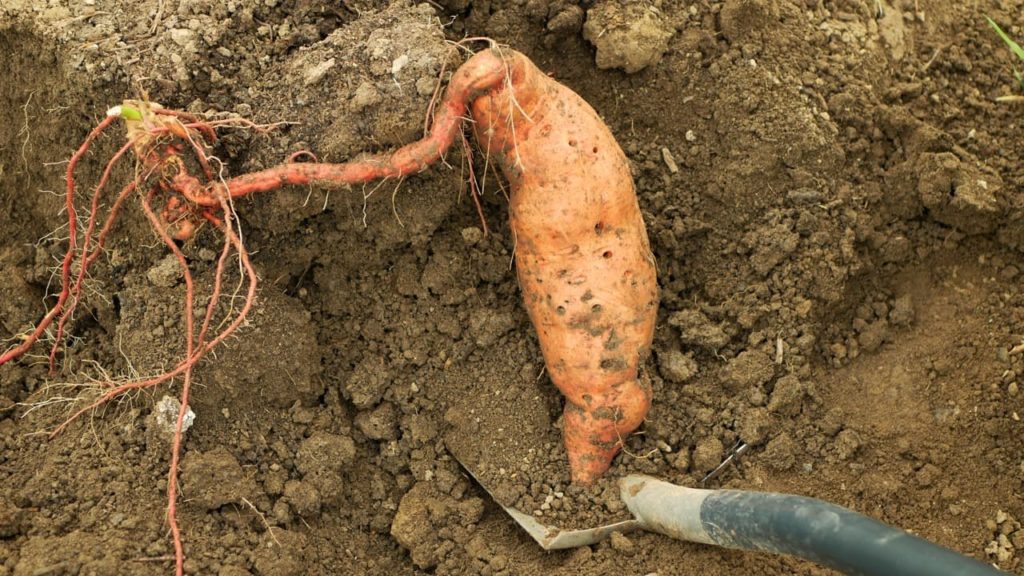
If growing in a container, you can simply overturn the pot to allow the contents to spill out, exposing the harvest of sweet potatoes inside.
Once you have unearthed your sweet potatoes, it is a good idea to check them over very carefully.
Any with damage or blemishes should be placed to one side to be used up as soon as possible, as they will not keep for long.
Any potatoes that look damage free should be cured by leaving them in a warm, dry spot for a few days for the skins to dry out and harden a little so that they will store a little better and for a little longer.
Storing Sweet Potatoes
Unfortunately, sweet potatoes will not store successfully for long even when they have been cured.
Therefore, it is best to use them up quickly or to preserve these in your freezer.
They can also potentially be dehydrated or canned for later use.

Blanched or boiled sweet potatoes can be frozen and will keep in the freezer for a number of months.
If freezer space is at a premium, there are recipes that will allow you to pressure can your sweet potatoes and store them safely at room temperature in sealed preserving jars.
Be sure to always check for reliable recipes from trusted sources when canning food at home.
Sweet potatoes can also be cubed or shredded and dehydrated in an oven, stove or electric dehydrator and can be stored in an airtight jar in this form for later use.
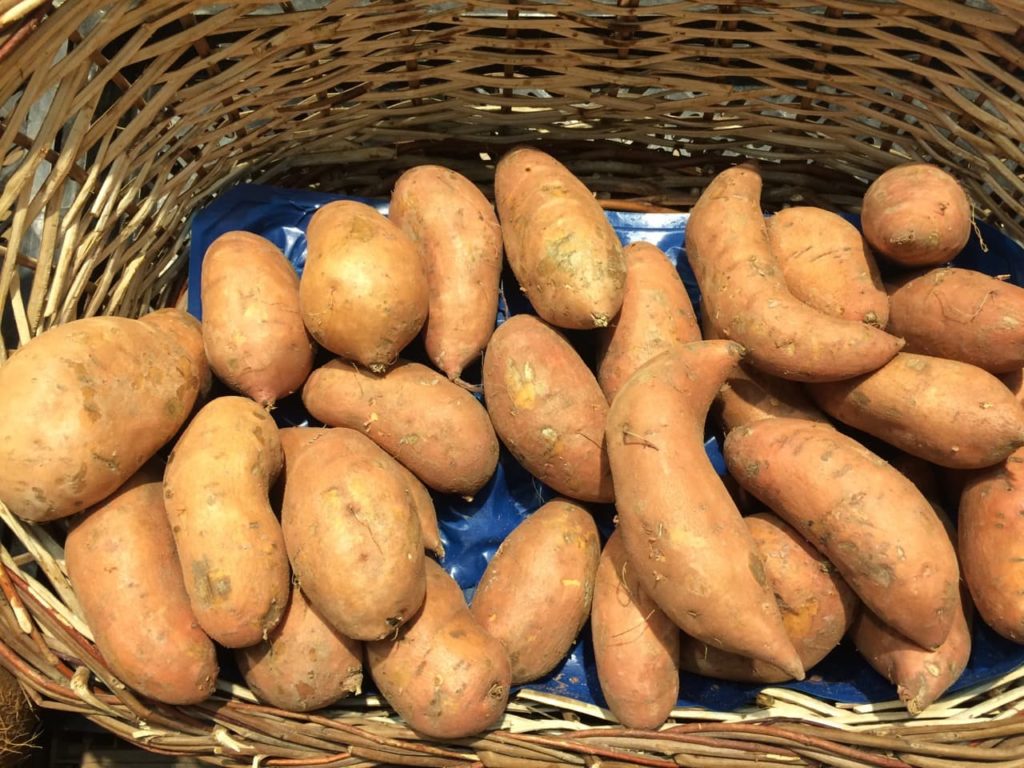
If stored this way, they can be kept for a year or even more, as long as they are stored correctly.
They can later easily be rehydrated and added into a range of different recipes.
Baking the sweet potatoes before dehydrating them gives the best results in terms of flavour.
Of course, you may have no difficulty in using up your sweet potatoes without these preservation techniques, as there are plenty of great recipes in which you can use them in your kitchen soon after you have harvested them from your garden.
